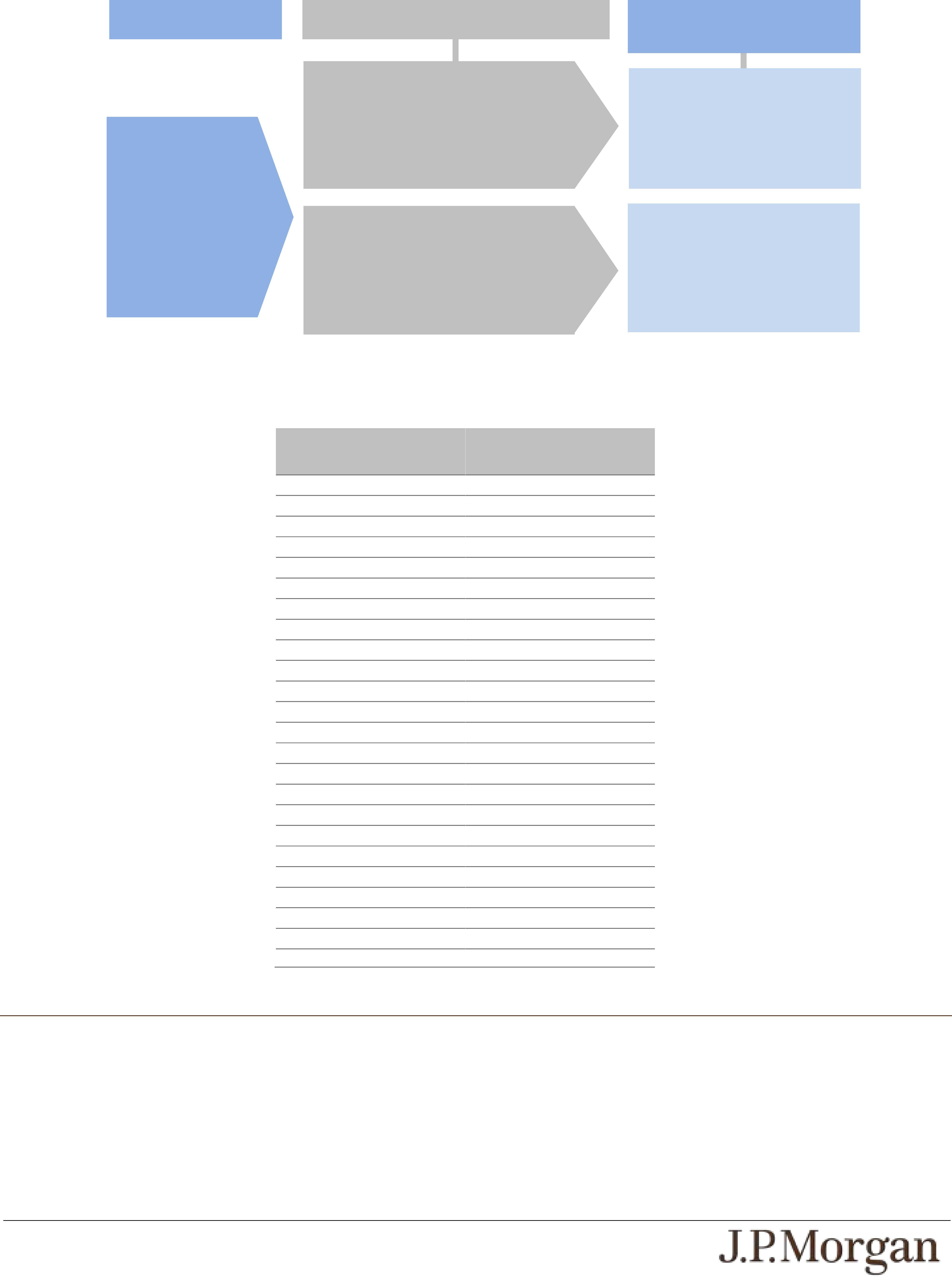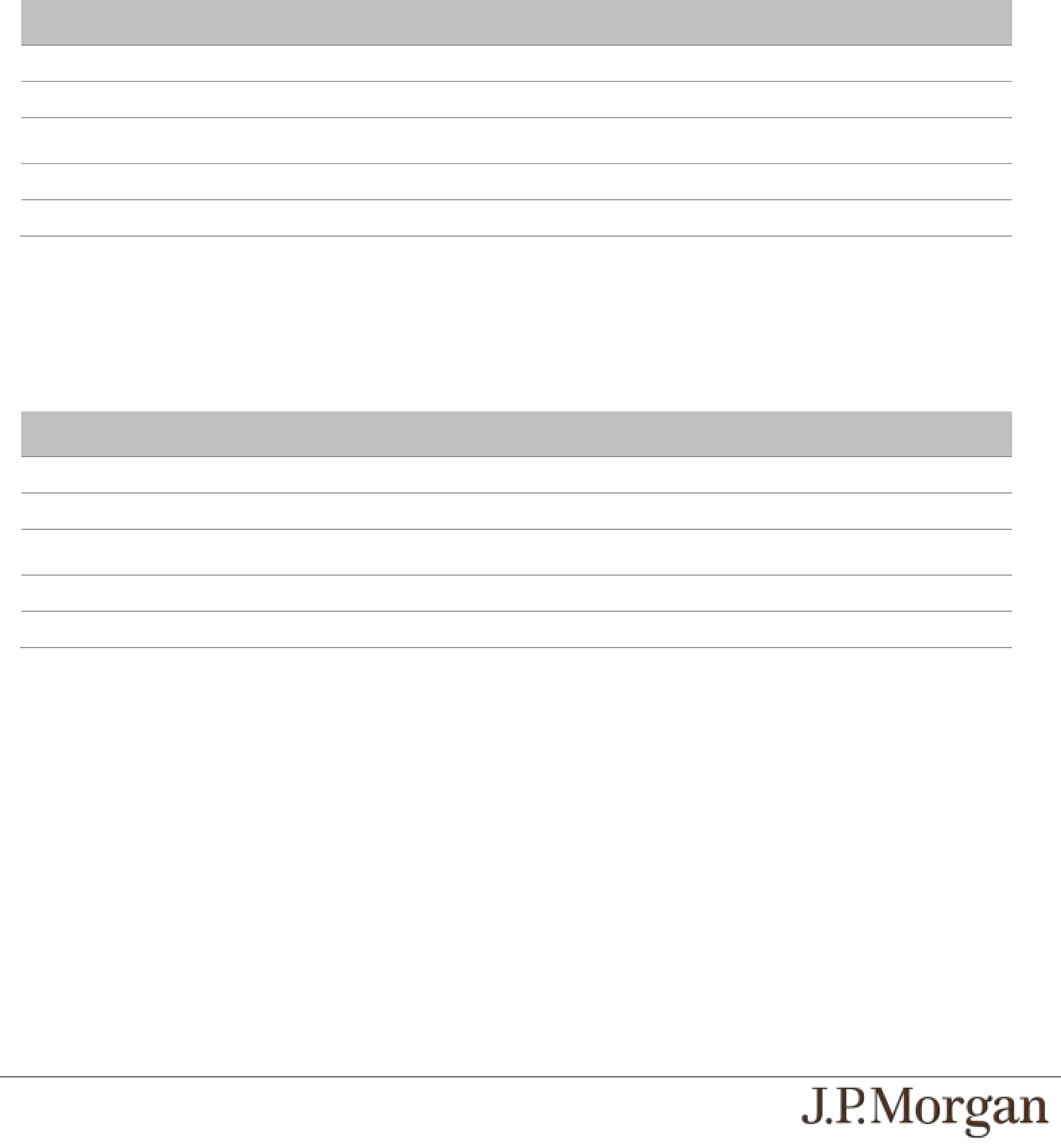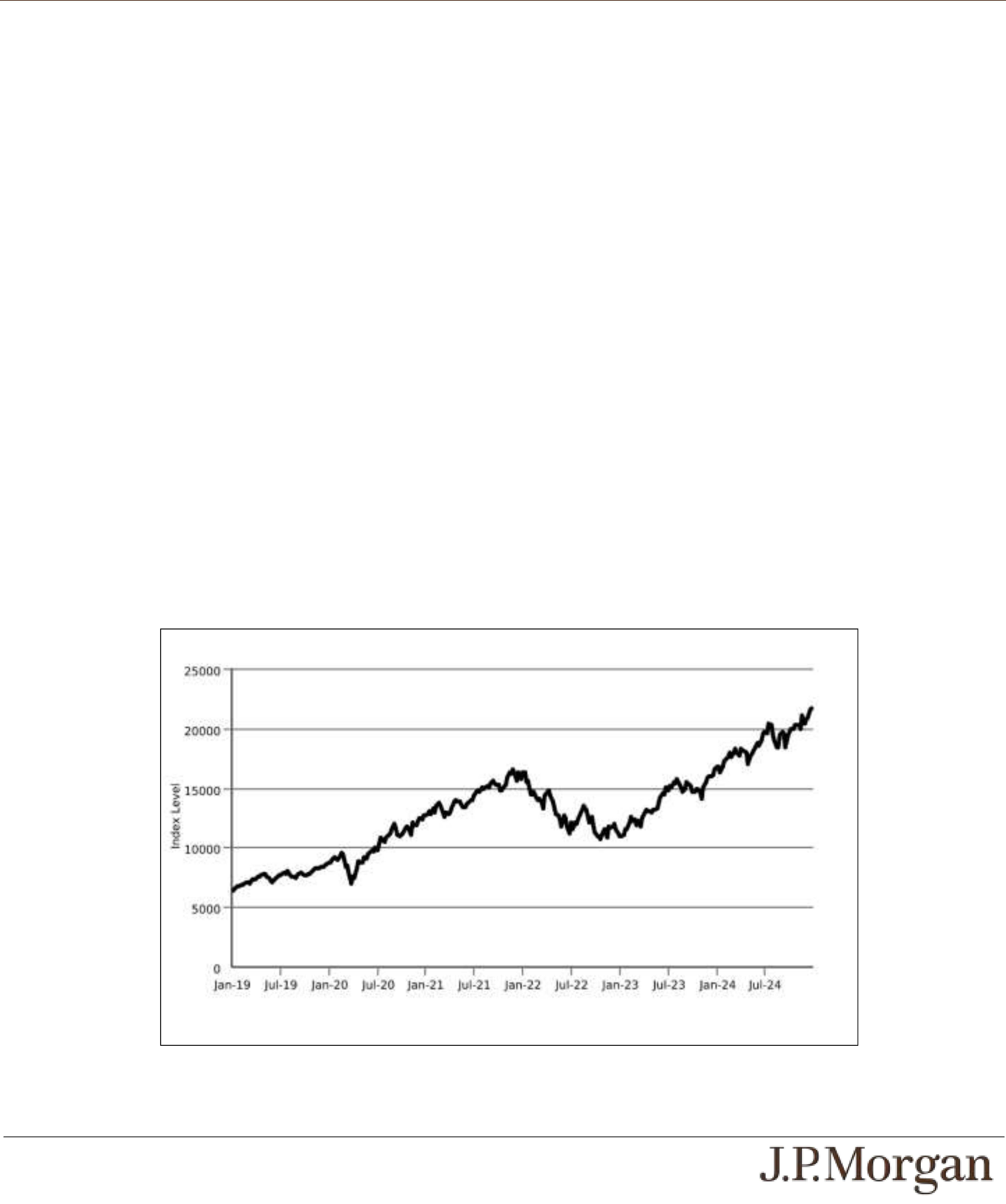● THERE ARE RISKS ASSOCIATED WITH THE FUNDS —
The Funds are subject to management risk, which is the risk that the investment strategies of the applicable Fund’s investment
adviser, the implementation of which is subject to a number of constraints, may not produce the intended results. These constraints
could adversely affect the market prices of the shares of the Funds and, consequently, the value of the notes.
● THE PERFORMANCE AND MARKET VALUE OF EACH FUND, PARTICULARLY DURING PERIODS OF MARKET
VOLATILITY, MAY NOT CORRELATE WITH THE PERFORMANCE OF THAT FUND’S UNDERLYING INDEX AS WELL AS
THE NET ASSET VALUE PER SHARE —
Each Fund does not fully replicate its Underlying Index (as defined under “The Underlyings” below) and may hold securities
different from those included in its Underlying Index. In addition, the performance of each Fund will reflect additional transaction
costs and fees that are not included in the calculation of its Underlying Index. All of these factors may lead to a lack of correlation
between the performance of each Fund and its Underlying Index. In addition, corporate actions with respect to the equity securities
underlying each Fund (such as mergers and spin-offs) may impact the variance between the performances of that Fund and its
Underlying Index. Finally, because the shares of each Fund are traded on a securities exchange and are subject to market supply
and investor demand, the market value of one share of each Fund may differ from the net asset value per share of that Fund.
During periods of market volatility, securities underlying each Fund may be unavailable in the secondary market, market
participants may be unable to calculate accurately the net asset value per share of that Fund and the liquidity of that Fund may be
adversely affected. This kind of market volatility may also disrupt the ability of market participants to create and redeem shares of
each Fund. Further, market volatility may adversely affect, sometimes materially, the prices at which market participants are willing
to buy and sell shares of a Fund. As a result, under these circumstances, the market value of shares of a Fund may vary
substantially from the net asset value per share of that Fund. For all of the foregoing reasons, the performance of each Fund may
not correlate with the performance of its Underlying Index as well as the net asset value per share of that Fund, which could
materially and adversely affect the value of the notes in the secondary market and/or reduce any payment on the notes.
● NON-U.S. SECURITIES RISK WITH RESPECT TO THE INDEX —
The non-U.S. equity securities included in the Index have been issued by non-U.S. companies. Investments in securities linked to
the value of such non-U.S. equity securities involve risks associated with the home countries and/or the securities markets in the
home countries of the issuers of those non-U.S. equity securities. Also, with respect to equity securities that are not listed in the
U.S., there is generally less publicly available information about companies in some of these jurisdictions than there is about U.S.
companies that are subject to the reporting requirements of the SEC.
● RISKS ASSOCIATED WITH THE BANKING INDUSTRY WITH RESPECT TO THE SPDR® S&P® REGIONAL BANKING ETF —
All or substantially all of the equity securities held by the SPDR® S&P® Regional Banking ETF are issued by companies whose
primary line of business is directly associated with the banking industry. As a result, the value of the notes may be subject to
greater volatility and be more adversely affected by a single economic, political or regulatory occurrence affecting this industry than
a different investment linked to securities of a more broadly diversified group of issuers. The performance of bank stocks may be
affected by extensive governmental regulation, which may limit both the amounts and types of loans and other financial
commitments they can make, the interest rates and fees they can charge and the amount of capital they must maintain. Profitability
is largely dependent on the availability and cost of capital funds and can fluctuate significantly when interest rates change. Credit
losses resulting from financial difficulties of borrowers can negatively impact the banking companies. Banks may also be subject to
severe price competition. Competition is high among banking companies and failure to maintain or increase market share may
result in lost market share. These factors could affect the banking industry and could affect the value of the equity securities held
by the SPDR® S&P® Regional Banking ETF and the price of the SPDR® S&P® Regional Banking ETF during the term of the notes,
which may adversely affect the value of your notes.
● RISKS ASSOCIATED WITH THE UTILITIES SECTOR WITH RESPECT TO THE UTILITIES SELECT SECTOR SPDR® FUND —
All or substantially all of the equity securities held by the Utilities Select Sector SPDR® Fund are issued by companies whose
primary line of business is directly associated with the utilities sector. As a result, the value of the notes may be subject to greater
volatility and be more adversely affected by a single economic, political or regulatory occurrence affecting this sector than a
different investment linked to securities of a more broadly diversified group of issuers. Utility companies are affected by supply and
demand, operating costs, government regulation, environmental factors, liabilities for environmental damage and general civil
liabilities and rate caps or rate changes. Although rate changes of a regulated utility usually fluctuate in approximate correlation
with financing costs, due to political and regulatory factors, rate changes ordinarily occur only following a delay after the changes in
financing costs. This factor will tend to favorably affect a regulated utility company’s earnings and dividends in times of decreasing
costs, but conversely, will tend to adversely affect earnings and dividends when costs are rising. The value of regulated utility
equity securities may tend to have an inverse relationship to the movement of interest rates. Certain utility companies have
experienced full or partial deregulation in recent years. These utility companies are frequently more similar to industrial companies
in that they are subject to greater competition and have been permitted by regulators to diversify outside of their original
geographic regions and their traditional lines of business. These opportunities may permit certain utility companies to earn more
than their traditional regulated rates of return. Some companies, however, may be forced to defend their core business and may
be less profitable. In addition, natural disasters, terrorist attacks, government intervention or other factors may render a utility
company’s equipment unusable or obsolete and negatively impact profitability. Among the risks that may affect utility companies
are the following: risks of increases in fuel and other operating costs; the high cost of borrowing to finance capital construction
during inflationary periods; restrictions on operations and increased costs and delays associated with compliance with
environmental and nuclear safety regulations; and the difficulties involved in obtaining natural gas for resale or fuel for generating
electricity at reasonable prices. Other risks include those related to the construction and operation of nuclear power plants, the
effects of energy conservation and the effects of regulatory changes. These factors could affect the utilities sector and could affect
the value of the equity securities held by the Utilities Select Sector SPDR® Fund and the price of the Utilities Select Sector SPDR®
Fund during the term of the notes, which may adversely affect the value of your notes.
● YOU ARE EXPOSED TO THE RISK OF DECLINE IN THE VALUE OF EACH UNDERLYING —
Payments on the notes are not linked to a basket composed of the Underlyings and are contingent upon the performance of each
individual Underlying. Poor performance by any of the Underlyings over the term of the notes may negatively affect whether you
will receive a Contingent Interest Payment on any Interest Payment Date and your payment at maturity and will not be offset or
mitigated by positive performance by any other Underlying.












